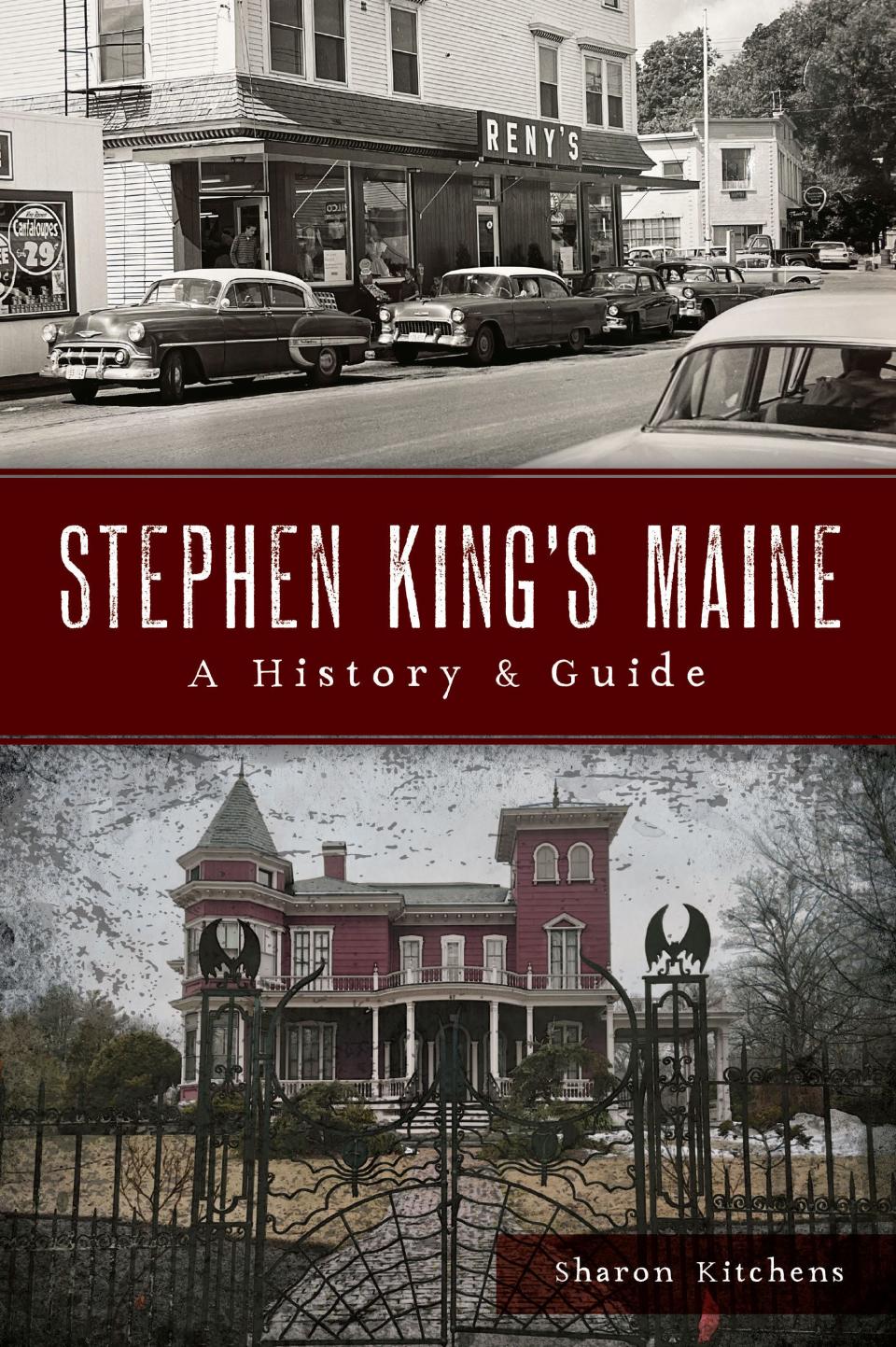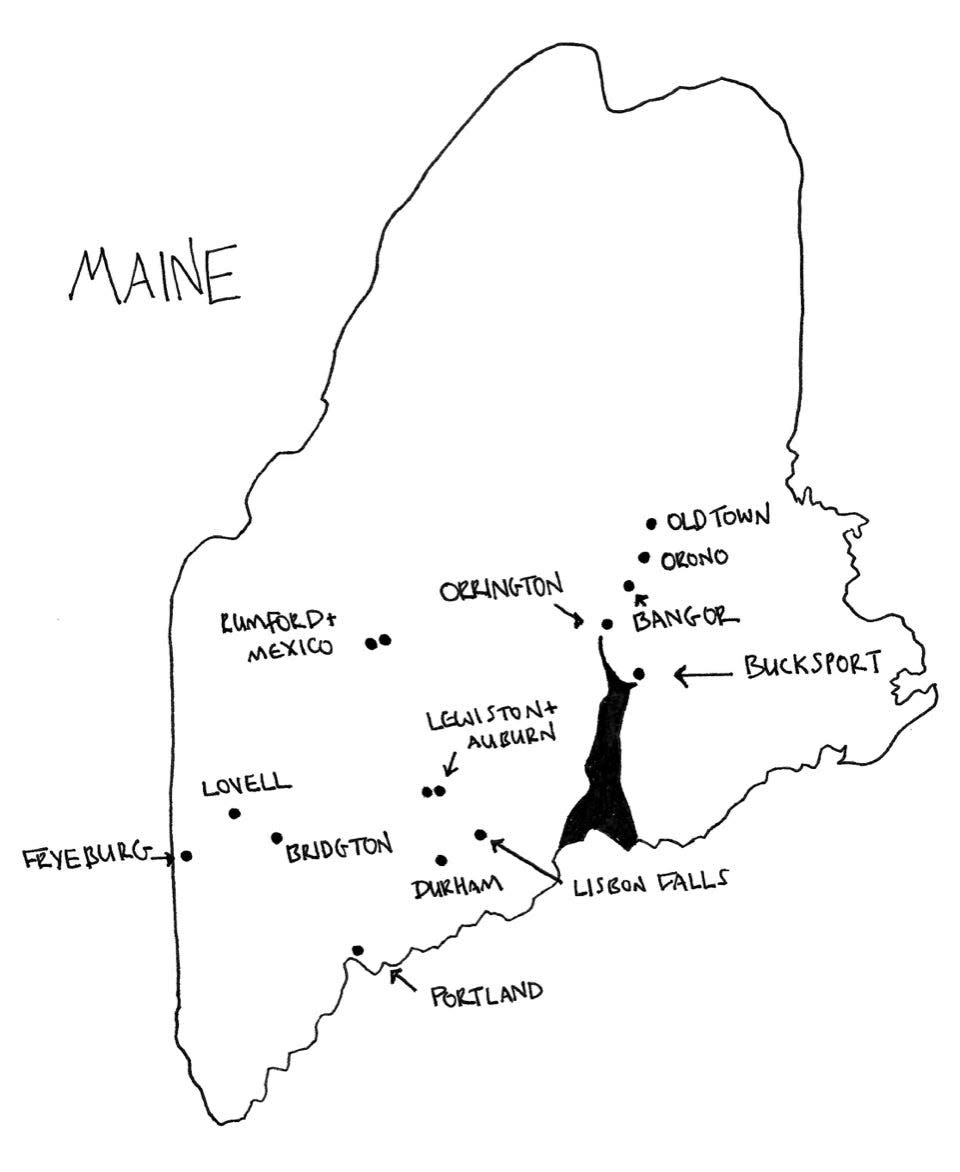'Stephen King's Maine': New book is a fan's guide to the people, haunts behind the novels
When Sharon Kitchens tells you she is a lifelong Stephen King fan, she means it: she read her first novel by the celebrated author, “Salem’s Lot,” before she was even 10 years old.
And here’s more evidence that Kitchens is a loyal fan of the man who gave the world Pennywise the Clown: she has written a book about King and about how the people he has met and the places he has lived have inspired a career that has spanned more than half a century.
“Stephen King’s Maine: A History & Guide,” the first book by Kitchens, is slated to hit the shelves of local bookstores on May 20.
“The day before his,” Kitchens said, referring to King’s next title, a collection of short stories called “You Like It Darker.”

Arcadia Publishing is the publisher of Kitchens' book which can be pre-ordered on Amazon. Kitchens encourages people to seek it out at their local bookstore.
New book reveals the sites, people behind Stephen King's books
In her book, Kitchens, of Portland, focuses on the areas where King has either lived, driven through, or frequented. Bangor, where King lived in his famous Gothic home for decades, is naturally among the communities discussed.
Bangor is known as the inspiration for Derry, where Pennywise the Clown reigned with terror in "It" and where a time traveler visits in the JFK-themed thriller, "11/22/63." Kitchens also explores Durham and Lisbon Falls, where King spent formative years during his childhood and found inspiration for "Salem's Lot" and other works.

In addition to interviewing people who once knew King – and who described him as always reading and also observant when in public – Kitchens also profiles real-life examples of the kinds of characters King creates in his stories.
One such individual is Joel Barnes, who was a foot patrol officer for the Portland Police Department in the '70s and '80s. In her book, Kitchens explains that she wanted to interview someone like Barnes because two of King's most iconic characters are members of law enforcement: Sheriff George Bannerman, from "The Dead Zone" and "Cujo," and Sheriff Alan Pangborn, from "The Dark Half" and "Needful Things." Both characters presided over King's fictional town of Castle Rock.
Christopher Peterson, of Westbrook, is another example. Peterson supervises two cemeteries, one in Portland and another in South Portland. Kitchens selected him because grave diggers appear in such King novels as "Salem's Lot" and "The Dark Half."

As for local ties, Sanford is mentioned in Kitchens’ pages, as it's the hometown of the heroine of “The Girl Who Loved Tom Gordon.” In that 1999 novel, a young Sanford Middle School student gets lost in the woods, and her only source of comfort amid the oppressive heat and mosquitoes is listening to Red Sox games on her transistor radio.
Longtime King readers can tell you that Sanford and its village of Springvale occasionally do pop up in his novels. Much of the final act of “Cell,” his 2005 thriller about our ubiquitous phones, takes place in Springvale. In “The Stand,” his apocalyptic opus from the '70s, King refers to the old Sanford Drive-In, once located where the Breary Farms apartments are now.
And speaking of “The Stand,” Kitchens will have material about Ogunquit if ever she decides to follow up “Stephen King’s Maine” with a sequel. Parts of “The Stand” take place in Ogunquit, for one of the novel’s main characters hails from there. Kitchens said she was not able to include her Ogunquit research in her book due to word-count considerations.
A map of Maine landmarks that Stephen King fans will recognize
Kitchens, who has written about food and agriculture for publications throughout New England, moved to Maine from Los Angeles a couple of decades ago. The more time she spent in Maine, traveling through its small towns and speaking with the folks who lived in them, the more she liked the place - and the more she reread the books by King that take place in his home state.
During this traveling and reading, Kitchens, who loves maps, began illustrating the geographies of the towns King writes about in his books. She called this mapwork her "pandemic project."

Kitchens did not know it at the time, but she was laying the groundwork for her first book. She assembled maps of Castle Rock and Jerusalem’s Lot and details she had gathered into an online story, called “Stephen King’s Maine,” which she posted in 2020 and has since racked up more than 28,000 views.
"Stephen King's Maine" pinpoints actual places in the state that serve as the basis for the small towns that comprise the Stephen King Universe. Kitchens sheds light on these everyday places by drawing upon historical research and conversations she had with Mainers who know King or once knew him.
In the appendix of her book, Kitchens offers itineraries for fans and travelers who would like to explore the communities she discusses.
Kitchens also recommends which King books to read before embarking on these excursions. Before exploring the western Maine lake town of Bridgton, for example, Kitchens suggests reading "The Mist," King's short story about customers stranded in a supermarket during a fog-induced onslaught of prehistoric-like creatures. Longtime fans of King know he was inspired to write that story while grocery shopping at a market at a well-traveled intersection in that community.
Kitchens also recommends Oriental Jade, a Chinese restaurant in Bangor, which King is said to frequent on nights he and his family head to the movies at the local mall. In the Bangor-inspired, Derry-set "It," old friends gather as adults at a local Chinese eatery. In Bangor, Kitchens also pinpoints Mount Hope Cemetery, which she said King is known for seeking inspiration for character names from gravestones. The cemetery appears in the 1989 film adaptation of "Pet Sematary," complete with a King cameo.
Kitchens a lifelong fan of Stephen King
Kitchens described King as a “really good storyteller” and shared her admiration for the way he and his wife, fellow novelist Tabitha King, have throughout their lives contributed to so many Maine communities, most notably through the foundation that bears their name.
In reading her first King book at quite an early age, Kitchens noted something with which she felt an immediate connection. When it comes to childhood, King “gets it.”
“He says the hard things to children – like how bad things happen to kids,” she said. “He’s writing about it. But he’s also writing about these awesome friendships.”
In particular, Kitchens spoke of friendships forged among young people who feel like outsiders, who may not fit the stereotype of the cheerleader or the jock. She mentions The Losers Club, the band of troubled children who battle Pennywise the Clown in Derry-set “It.” She also brings up the four struggling boys who venture into the woods to find a rumored missing corpse in Castle Rock in “The Body,” which was adapted into the 1986 film “Stand By Me.”
“His writing means so much to me,” she said.
Of all the characters King has created, Kitchens said her favorite is Red, the narrator of the novella, “Rita Hayworth and the Shawshank Redemption,” who Morgan Freeman portrayed in the 1994 film adaptation.
Kitchens did not get to interview King for her book, but she said she got the go-ahead to pursue her project through his office.
“He is aware of it,” she said. “There was no way I was doing this without his approval. I’ll be sending him a copy.”
Attempts to reach King's literary agent for comment on the upcoming book were unsuccessful.
Kitchens said she wrote “Stephen King’s Maine” for herself and for the people in the small towns that she loves to visit, and that King captures so vividly in his work. She said the effort will have been worth it if her book brings somebody into their town, into their restaurant, or their store.
“I feel like most of the time histories are about famous people,” Kitchens said. “They’re about wealthy people. But I find those everyday people are the most interesting. And I want their stories to be told.”
This article originally appeared on Portsmouth Herald: Stephen King’s Maine’: A fan’s guide to the novelist’s local haunts
